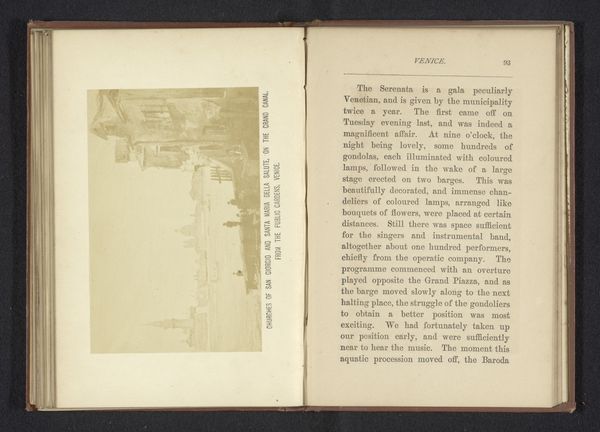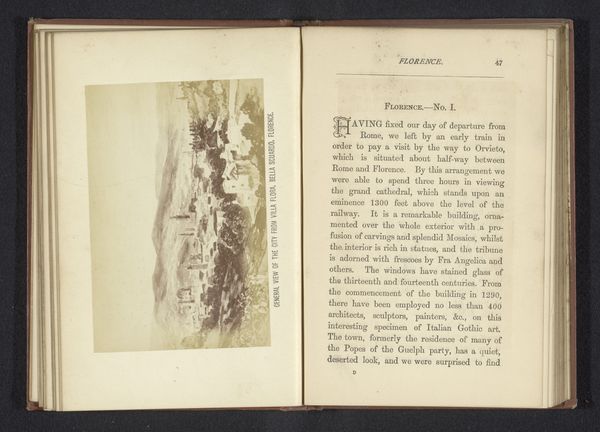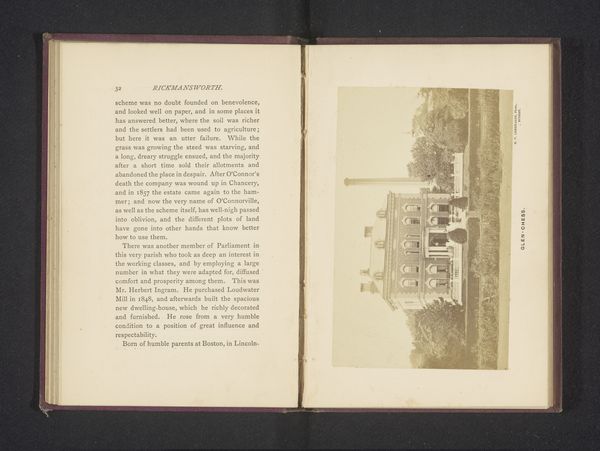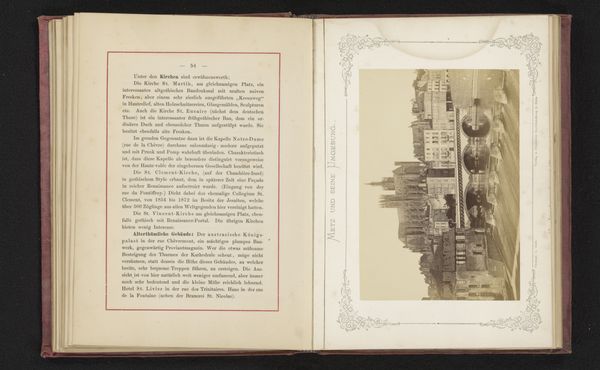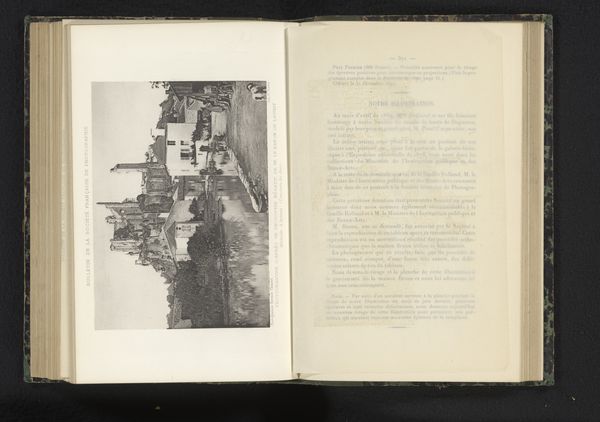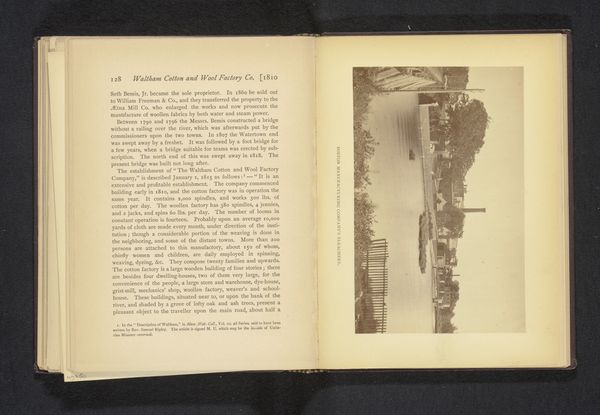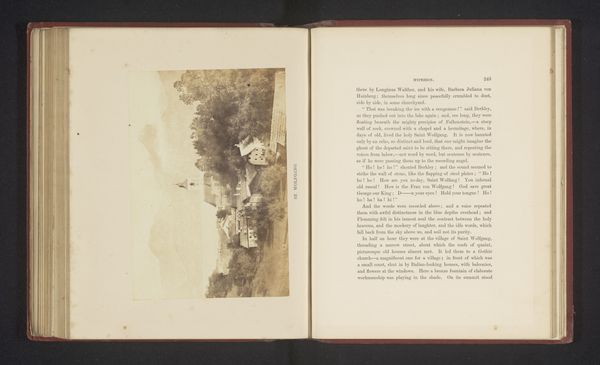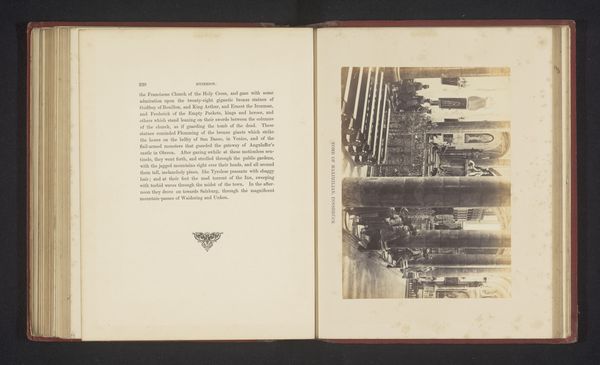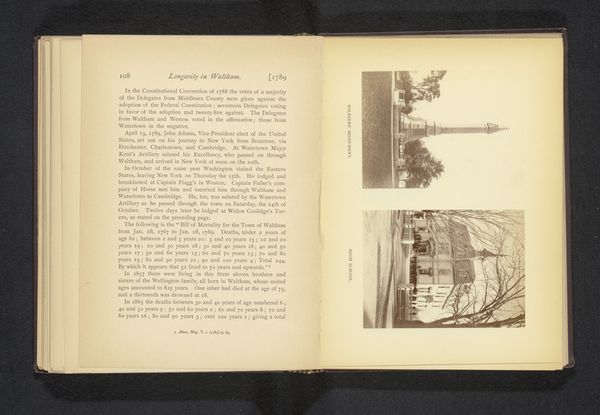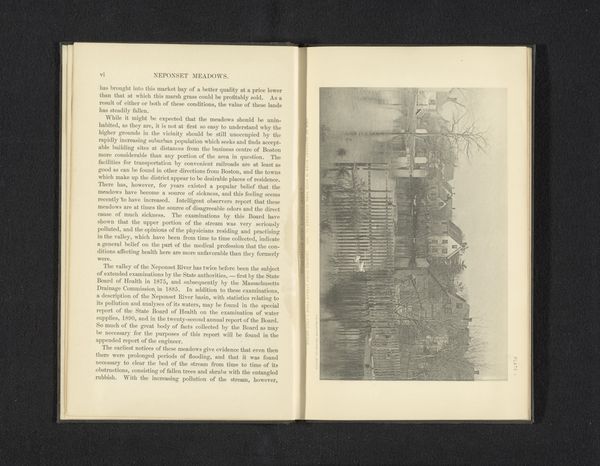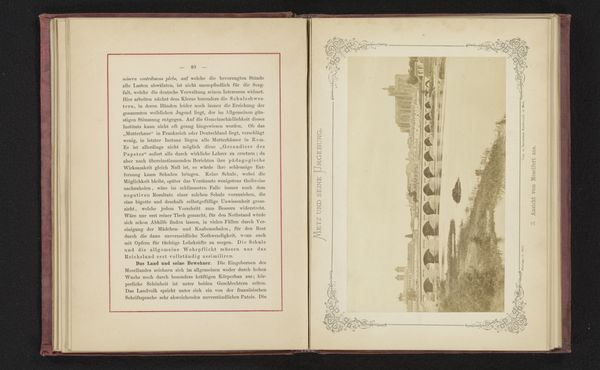
print, photography, albumen-print
# print
#
landscape
#
house
#
photography
#
cityscape
#
albumen-print
Dimensions: height 83 mm, width 127 mm
Copyright: Rijks Museum: Open Domain
Curator: This photoprint captures the Ponte Vecchio in Florence. It's an albumen print and dates from before 1877. Editor: There's something so evocative about this old photo. It has a hazy, dreamlike quality, almost like a memory fading. The shops clustered along the bridge give it such a unique feel. Curator: It really is a striking image. Before 1877, Florence was a popular destination for artists and travelers on the Grand Tour, eager to capture its beauty. This image is more than just a depiction of a famous bridge; it’s a commodity, catering to that tourist market. Editor: I agree. There’s that element of capturing the picturesque for a specific consumer base. However, the image also resonates beyond mere commerce. I'm thinking about the communities living and working along that bridge – were they included or exploited? Curator: That's a crucial question. This photograph reinforces a very particular narrative of Florence: an idyllic, timeless beauty detached from everyday lives and labor. It's a representation that omits or glosses over other aspects of Florentine life, reinforcing a romanticized view of the city for outside consumption. Editor: Precisely! It's the visual equivalent of what we find in the written travelogues from the era. These were shaping and reinforcing particular understandings and expectations about specific sites and, more importantly, certain kinds of "value" that outsiders project onto a place like Florence. Curator: I see it as a record of Florence's evolution as a tourist destination. Photography in the mid-19th century played a key role in this transformation. Think of the way these photographs circulated – often in albums sold to visitors as mementos, cementing Florence's status as an essential stop on the itinerary. Editor: Indeed, it’s an invitation, and perhaps a challenge, to look past the beautiful, picturesque surface and to explore the power dynamics involved in creating and consuming this image. What stories are hidden beneath its soft focus? Curator: And it encourages us to ask what role the marketing of Florence continues to play in obscuring some of its past injustices and inequalities today. Editor: Absolutely. It reminds me that the bridges to understanding history and culture require critical reflection.
Comments
No comments
Be the first to comment and join the conversation on the ultimate creative platform.
